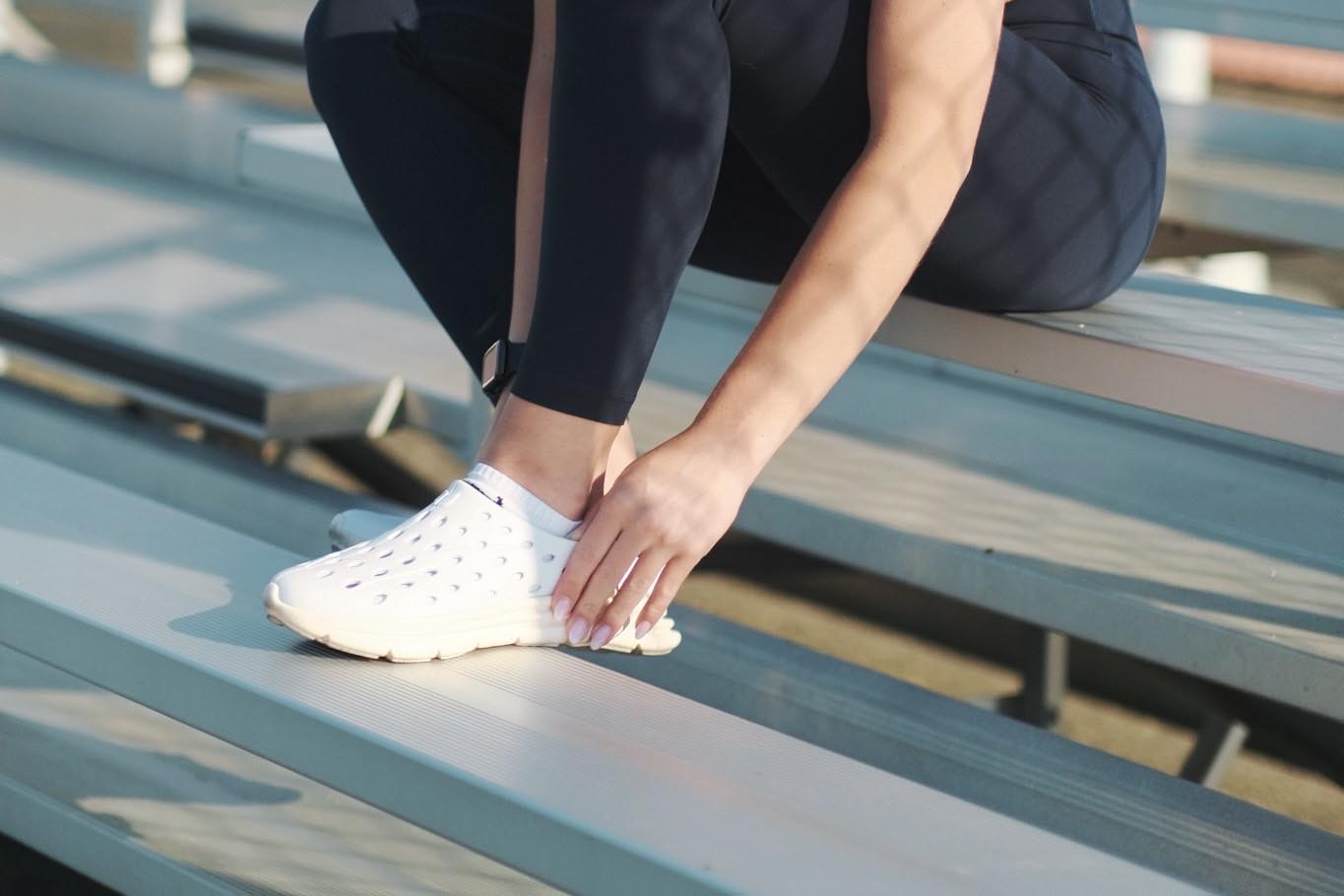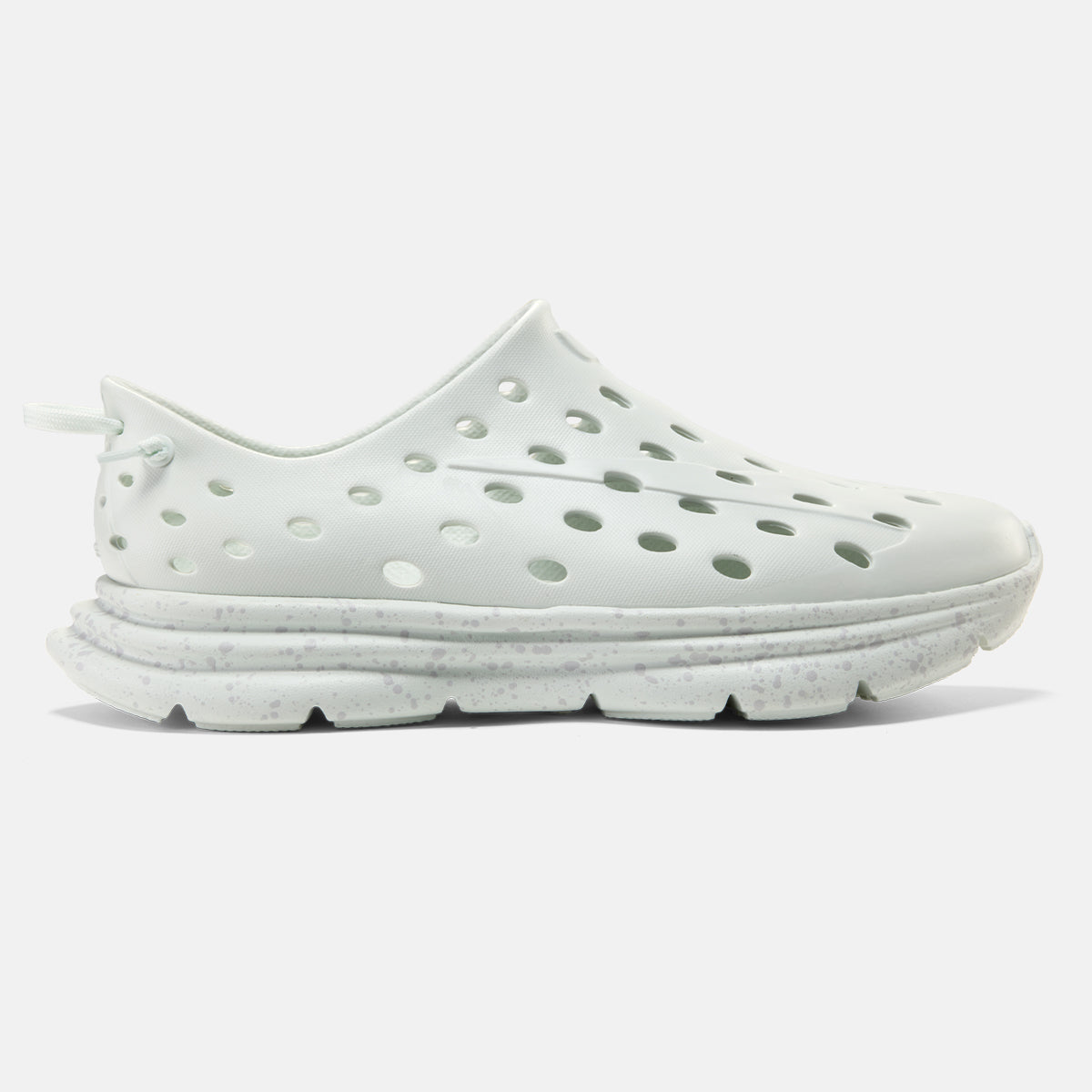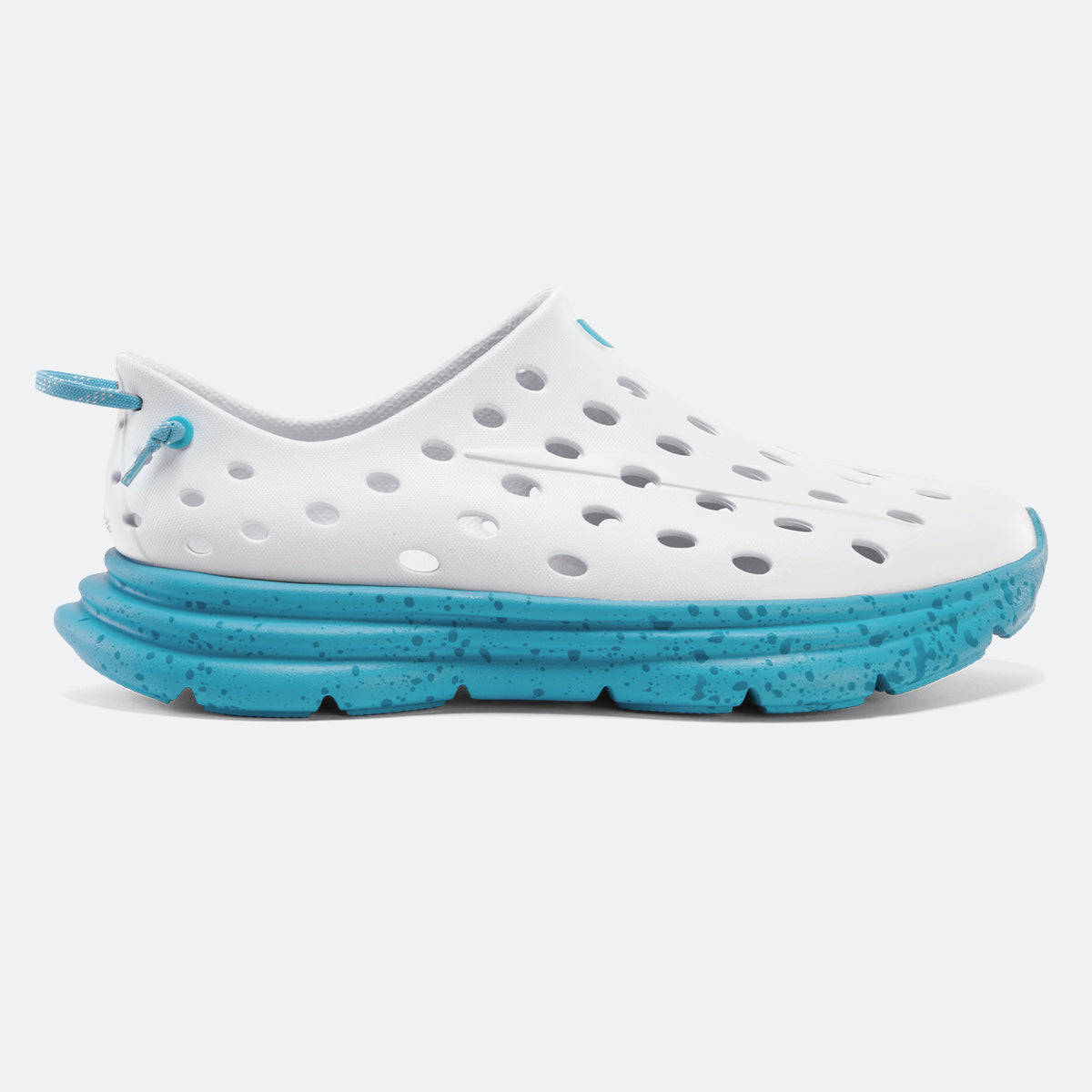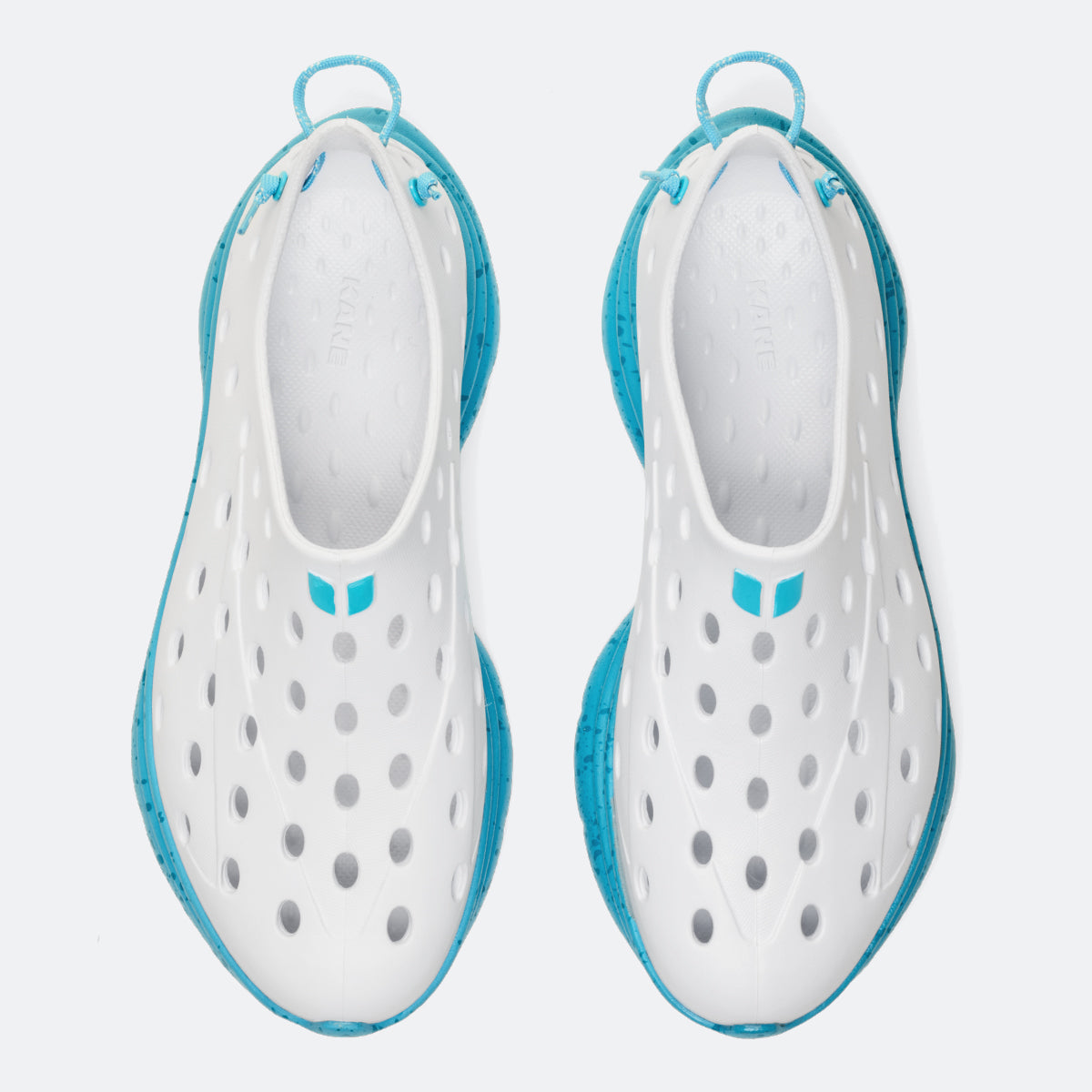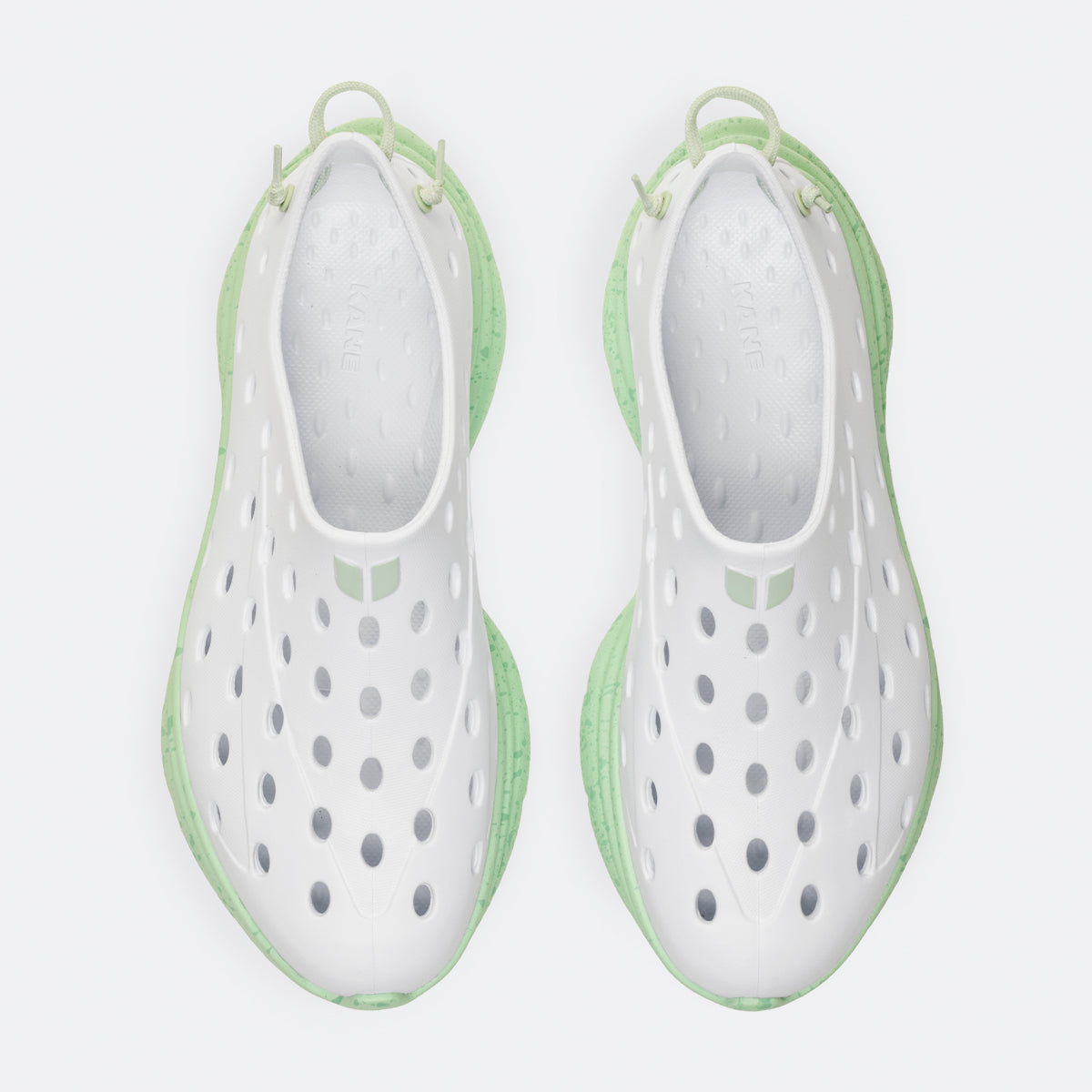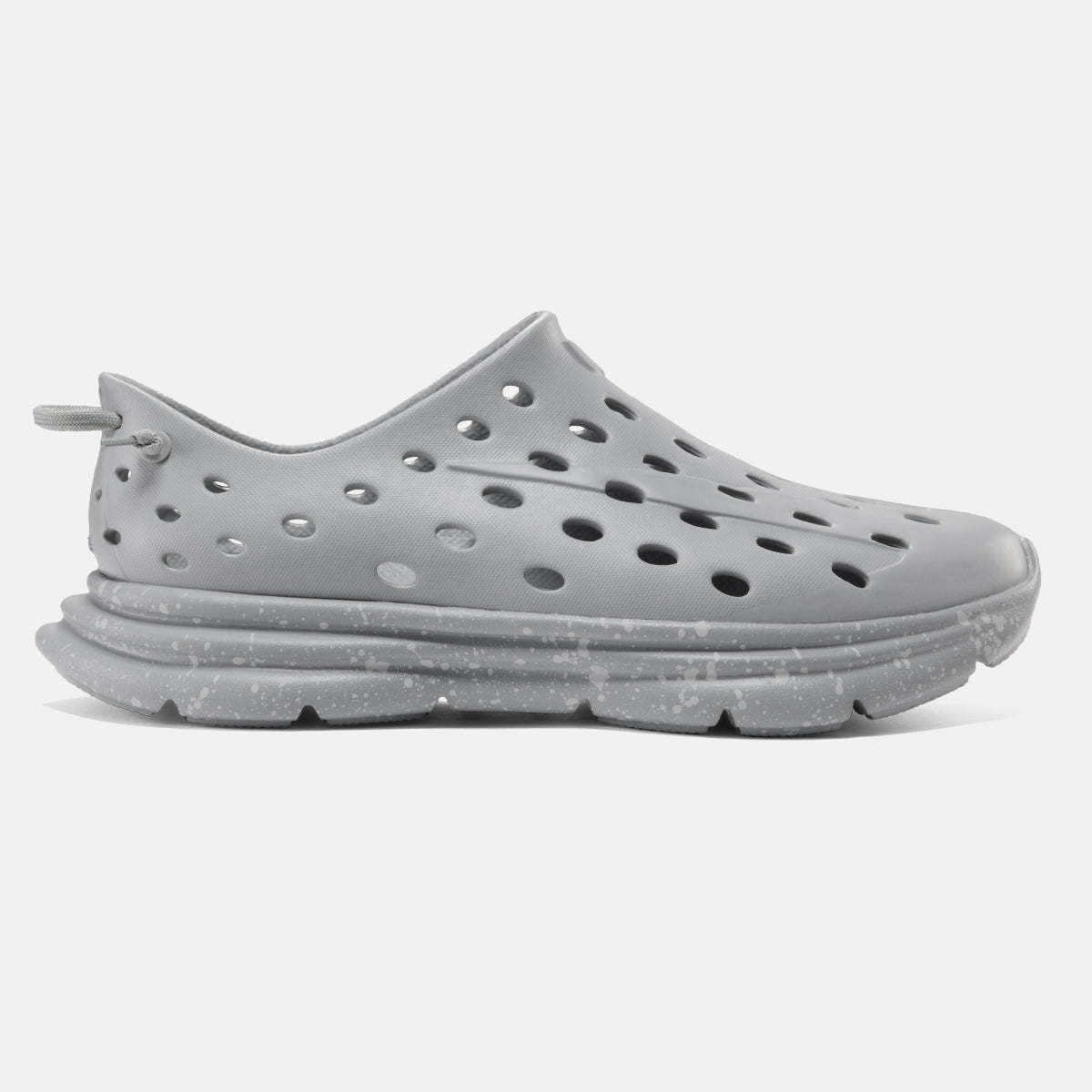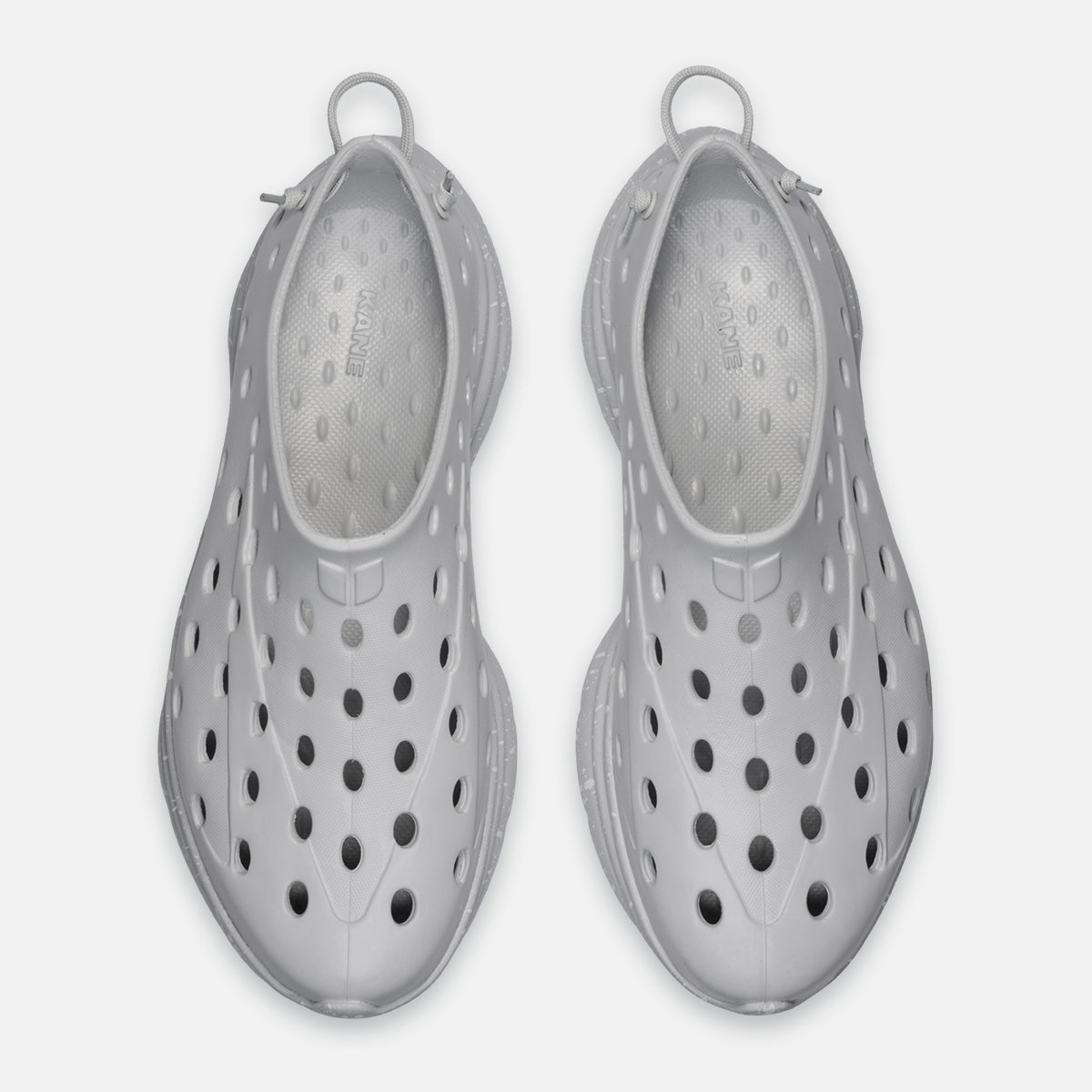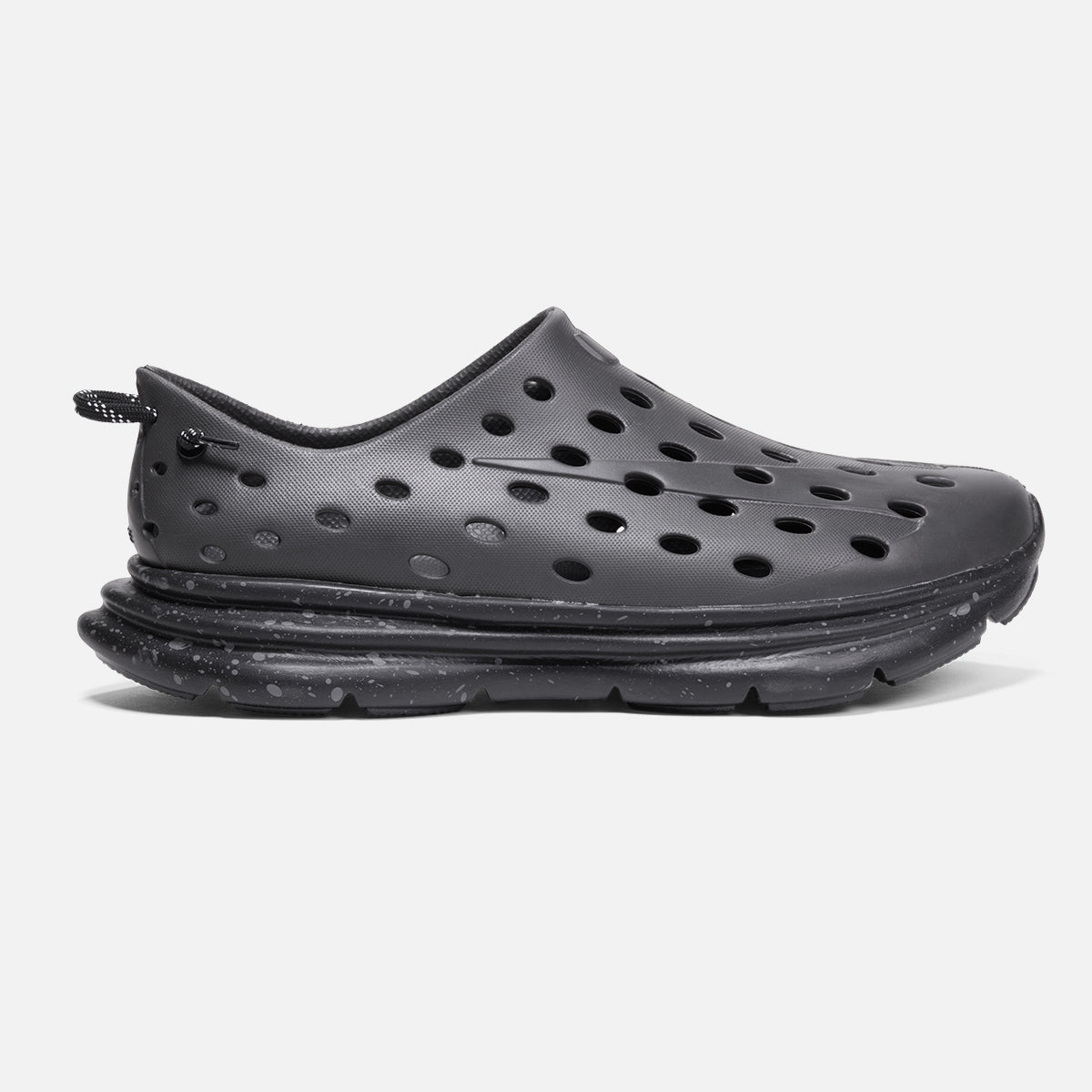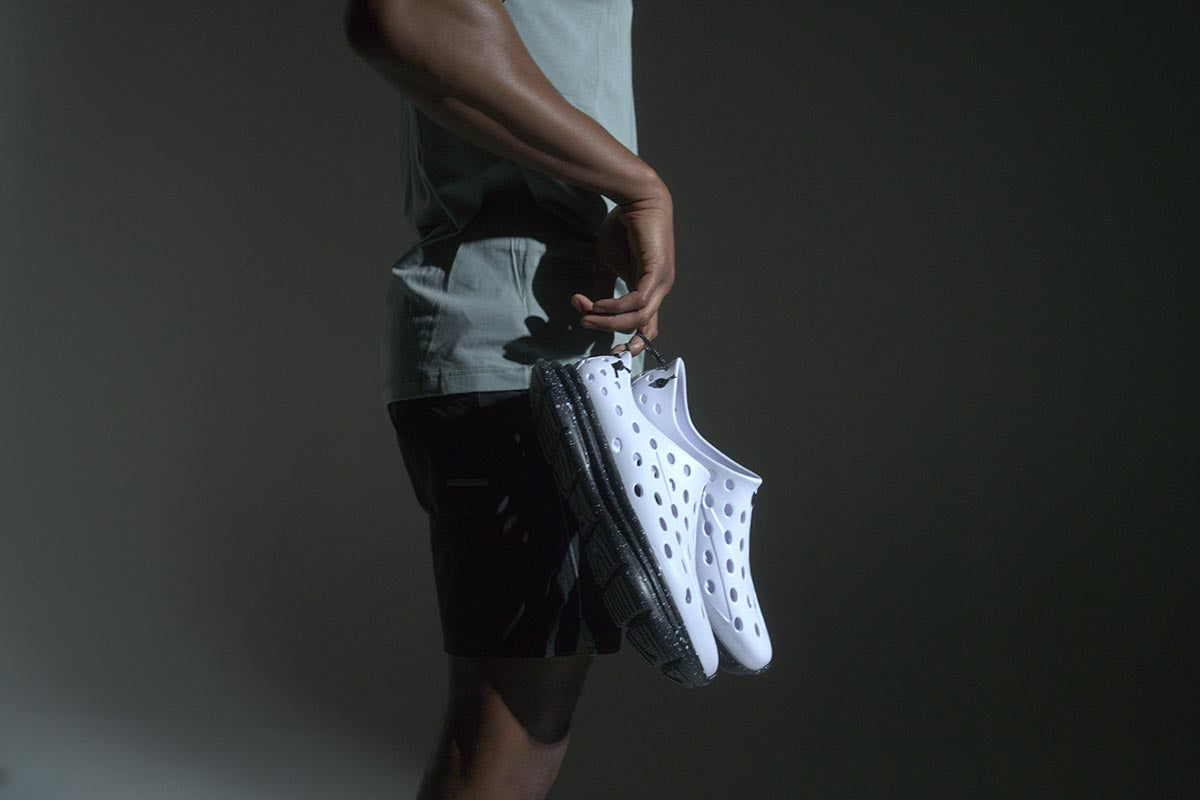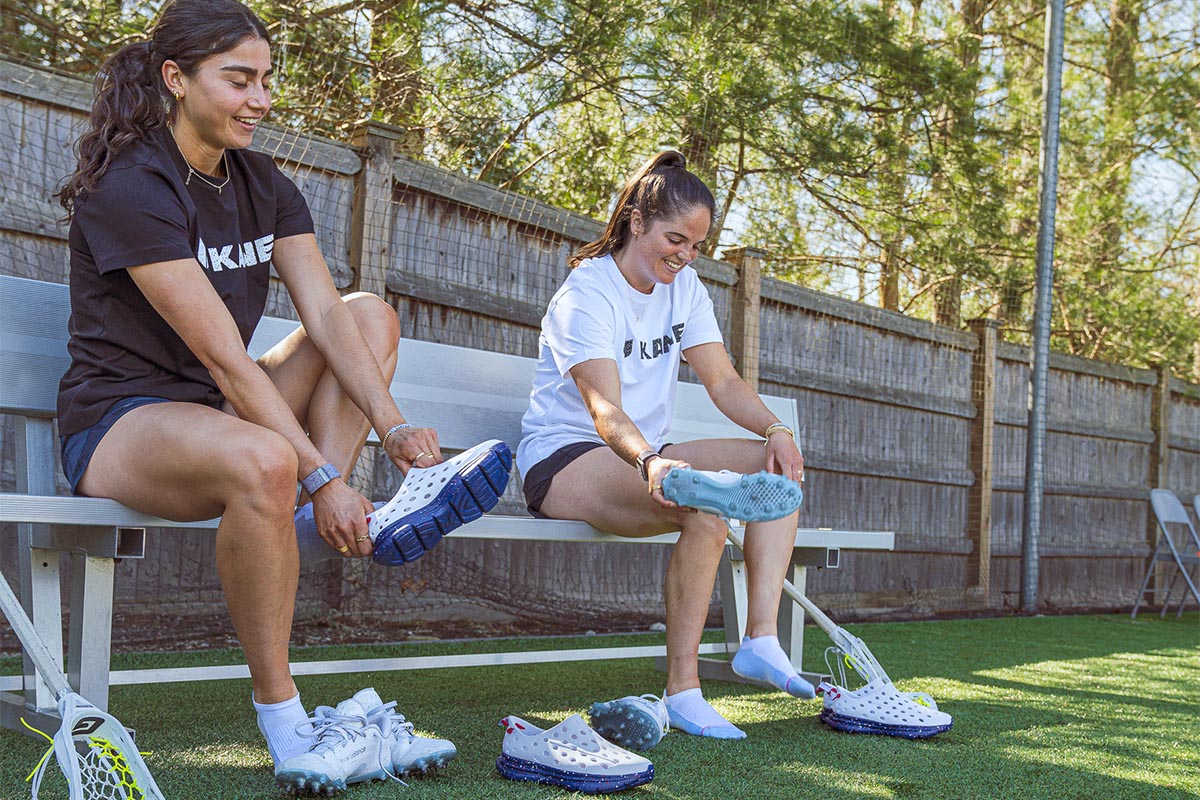Why do my legs hurt from standing all day? Understanding causes and finding relief
If you've ever finished a shift and felt like your legs were made of cement, you're not alone. Millions of people deal with aching, tired legs after standing for work. The throbbing pain, swelling, and exhaustion aren't just uncomfortable. Your body is sending clear signals that something needs to change.
The good news? Leg pain from prolonged standing is manageable. Understanding what causes it and how to address it can transform your daily experience and protect your long-term health.
Key takeaways
- Standing all day causes leg pain through muscle fatigue, poor circulation, and increased pressure on joints and leg veins.
- Immediate relief comes from proper supportive footwear, regular movement breaks, compression socks, and elevation.
- Long-term solutions include strengthening exercises, recovery routines, and addressing biomechanical issues before pain persists.
Why your legs hurt from standing all day: The science and common causes
Your body wasn't designed to remain stationary for hours. Prolonged standing creates multiple problems simultaneously, and understanding what's causing pain helps you target the right solutions.
Static standing keeps leg muscles—your calves, thighs, and feet—contracted continuously, causing muscle fatigue, muscle aches, and metabolic waste buildup. Blood flow becomes compromised as gravity pulls blood downward. Without walking's pumping action, it pools in your lower legs and feet, creating oxygen-starved tissues, swelling, and heavy, achy sensations.
Leg veins rely on muscle contractions and one-way valves to push blood toward the heart. When these valves weaken, venous insufficiency develops. This can progress to chronic venous insufficiency or chronic venous disease, causing persistent swelling and visible varicose veins. In severe cases, poor circulation increases the risk of blood clots and deep vein thrombosis.
Constant pressure on your knees, ankles, and hips can trigger joint pain. Nerve-related issues like spinal stenosis, sciatica, and peripheral neuropathy cause sharp pain, numbness, or tingling. Foot conditions like plantar fasciitis often accompany leg discomfort, while inadequate footwear without proper support accelerates fatigue.
Healthcare workers, teachers, retail staff, and others who spend long hours on hard surfaces face greater strain. Flat feet, varicose veins, high blood pressure, heart disease, excess weight, and pregnancy all amplify risk by adding stress to your lower body and blood vessels.
How can I get immediate relief when my legs hurt?
When your legs hurt and your feet are tired, these strategies provide quick relief. You don't need expensive equipment or a complete lifestyle overhaul, but smart, targeted actions that address the root causes of your discomfort.
Movement and position changes
Don't stay planted in one spot. Shift your weight every few minutes and take short walks during breaks. Movement activates the muscle pump in your calves and improves circulation.
Try these simple stretches:
- Calf raises: Rise onto your toes, hold, then lower (10-15 reps)
- Ankle circles: Lift one foot and rotate your ankle in both directions
- Hip flexor stretches: Step forward into a gentle lunge position
- Toe curls: Spread and curl your toes to release tension
Elevation, compression, and massage
Elevate your legs above heart level during breaks for 10-15 minutes. This allows gravity to reduce swelling and improve circulation.
Compression stockings or compression socks apply graduated pressure that prevents blood pooling. Wear compression socks throughout your shift for best results, ensuring proper fit (too tight restricts circulation).
Ice packs reduce inflammation after your shift. Apply cold for 15-20 minutes to ease discomfort.
Foot massage releases muscle tension. Use a tennis ball or foam roller under your feet, rolling from heel to toe. For calves, massage out knots and tight spots with your hands or a massage tool.
How does proper footwear protect your legs?
Your shoes are your foundation. The right shoes prevent pain, while poor choices can guarantee it. Most people underestimate how dramatically footwear affects their entire body, from feet to knees to hips to lower back.
What makes footwear supportive for all-day standing
Supportive footwear needs several key features:
- Arch support: Maintains proper foot alignment and distributes pressure evenly
- Cushioning: Absorbs shock with each step and reduces fatigue
- Heel elevation: A modest heel-to-toe drop (6-10mm) enables smooth energy transfer and reduces pain in the calves and Achilles
- Stability: Keeps your foot properly positioned to prevent rolling or excessive motion
- Breathable materials: Allow air circulation to keep feet comfortable during extended periods of wear
Athletic shoes built for walking or running don't provide the support needed for standing. Fashion shoes with high heels can work against your foot health. When footwear fails, your feet compensate with poor posture, which can throw off your knees, hips, and back. This muscle strain can extend up your entire body.
The science of recovery footwear
Recovery footwear integrates orthopedic principles for post-activity and all-day standing relief. Developed with foot and ankle surgeon Dr. Daniel Geller, DPM, KANE's recovery shoes use RestoreFoam™—a dual-density material from Brazilian sugarcane providing cushioning and active arch support.
Features include heel capture that reduces stress on calf muscles and Achilles, as well as footbed nodes that massage pressure points. As Dr. Geller explains, "Within the shoe, we’ve got nodes. These little nodes are going to increase local microvasculature. They're going to act as little massage nodules. It's going to make the skin and tissue feel pretty good. It's going to also facilitate some of the recovery processes."
The shoes also offer enhanced airflow and sustainable construction, and they're ideal for going to physical therapy, commuting, or post-shift recovery.
Long-term solutions to prevent chronic pain
Preventing pain requires consistent habits beyond immediate relief.
Strengthening exercises for leg health
Strong muscles handle standing better. Calf raises strengthen blood-pumping muscles (three sets of 15-20 reps daily). Wall sits build thigh and knee strength. Toe yoga improves foot mobility. Single-leg balance exercises prevent injuries.
Workplace ergonomics and posture
Good posture means feet hip-width apart, weight distributed evenly, knees slightly bent, and core engaged. Anti-fatigue mats provide cushioned surfaces that reduce pain. Take breaks from the standing position every 20-30 minutes to shift position and move around.
Recovery and lifestyle factors
Stay hydrated to prevent muscle fatigue and cramping. Losing weight can reduce stress on the legs and feet. Post-shift, stretch and soak feet in Epsom salts to reduce swelling. Wear recovery shoes like the KANE Revive to improve circulation. Sleep seven to nine hours for muscle repair.
Discover KANE recovery shoes
When standard footwear isn't cutting it and your legs need serious support, recovery footwear designed with orthopedic principles makes a measurable difference.
KANE's recovery shoes provide excellent support, comfort, and durability for those dealing with leg fatigue from standing. The Revive features an adjustable hook-and-loop single-strap synthetic upper, plush TPR footbed, and durable injected EVA outsole—all designed to help your body recover.
When and how to wear KANE Revive
Wear recovery shoes directly after strenuous activity or long shifts. This timing helps minimize inflammation and launches the healing process. The shoes work equally well for everything from warm-up drills to physical therapy appointments to simply relaxing at home.
For maximum comfort and effective recuperation, ensure a secure fit. The hook-and-loop strap should hold your foot snugly without excessive tightness.
When to see a healthcare professional
Most leg pain from standing improves with proper footwear, movement, and recovery strategies. However, see a doctor if you experience severe pain that doesn't improve with rest, significant swelling that persists overnight, warmth or redness in one leg (possible deep vein thrombosis), numbness or tingling, skin changes, or symptoms affecting daily activities.
Conditions like peripheral artery disease, chronic venous insufficiency, spinal stenosis, or peripheral neuropathy require professional diagnosis. Your medical history guides appropriate testing and treatment. Physical therapy, custom orthotics, medical treatments, or surgery may be necessary. Early intervention can prevent serious complications.
Take control of your leg health
Standing all day doesn't have to mean suffering through chronic pain. Small, consistent changes, such as proper footwear, regular movement, compression wear, and dedicated recovery, make a substantial difference. Your legs work hard to support you. Give them the support they deserve in return.
Listen to your body. If pain persists despite these strategies, seek professional guidance. With the right approach, you can prevent discomfort, reduce fatigue, and maintain your leg health.
Frequently asked questions
How to fix sore legs from standing all day?
Elevate your legs above heart level, wear compression socks to improve circulation, and invest in supportive footwear with proper arch support. Take regular movement breaks, stretch frequently, and develop a post-shift routine with recovery footwear to alleviate discomfort.
Can standing for 8 hours cause leg pain?
Absolutely. Eight hours of standing creates significant muscle fatigue, impairs circulation, and places constant pressure on joints. Blood flow becomes restricted, causing pooling in your legs, while joints absorb repetitive stress. Individual factors like fitness level, footwear quality, and floor surface affect severity, but virtually everyone experiences discomfort after prolonged periods of standing.
Why do my legs hurt so bad after a 12-hour shift?
Extended shifts amplify risk factors. Muscle fatigue compounds as metabolic waste accumulates, circulation worsens, and fluid buildup increases swelling. Dehydration, inadequate breaks, and poor footwear multiply the problem. Your body isn't designed for such prolonged standing without proper support and recovery.
How to stand for 12 hours without pain?
Wear high-quality supportive footwear and compression stockings, and stay hydrated. During your shift, move regularly: shift weight, take short walks, and stretch every 30-60 minutes. Use anti-fatigue mats and maintain good posture with bent knees and engaged core. After your shift, prioritize elevation, stretching, and recovery footwear. Building leg strength improves standing endurance over time.
No content on this site should ever be used as a substitute for direct medical advice from your doctor or other qualified clinicians.



































